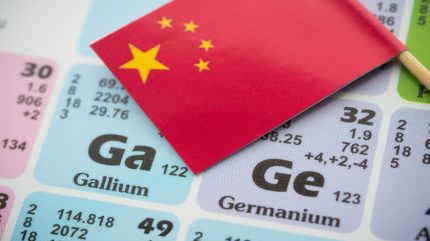
China has delayed and then discreetly issued its first rare earth mining and smelting quotas for 2025, a move that signals tighter control over the critical sector, reported Reuters, citing unnamed sources.
The delay in this year’s quotas is partly attributed to a proposal introduced in February to include imported ore in the quota system.

Discover B2B Marketing That Performs
Combine business intelligence and editorial excellence to reach engaged professionals across 36 leading media platforms.
This proposal was met with resistance from import-dependent companies concerned about potential restrictions on their feedstock supply.
Rare earth elements (REEs), essential in various high-tech applications, are a key focus of global supply chain monitoring.
China, as the world’s largest producer of rare earth minerals, has traditionally issued these quotas to state-owned companies.
Access to the quotas was restricted to only two state-owned groups, China Rare Earth Group and China Northern Rare Earth Group High-Tech, which were eligible last year, a decrease from six in previous years.

US Tariffs are shifting - will you react or anticipate?
Don’t let policy changes catch you off guard. Stay proactive with real-time data and expert analysis.
By GlobalDataThe expected announcement in the first quarter was absent, and companies were reportedly instructed not to disclose the figures for security reasons.
This strategic shift comes as China becomes increasingly protective of its rare earth resources, which have been a point of contention in trade negotiations with the US and EU.
China has previously leveraged its control over rare earths, adding several elements to its export restriction list in response to US tariff hikes, disrupting supply chains and impacting manufacturers globally.
The Ministry of Industry and Information Technology, which is responsible for issuing the quotas, has not responded to enquiries about the change in disclosure practices.
In the past year, China’s mining quotas were set at 270,000 tonnes (t), with growth falling to 5.9% from 21.4% in 2023.
The smelting and separation quotas also saw an increase to 254,000t, a 4.2% rise from 2023.
The quota system, in place since 2006, alongside corporate consolidation, has been used by Beijing to exert control over the industry’s output.





